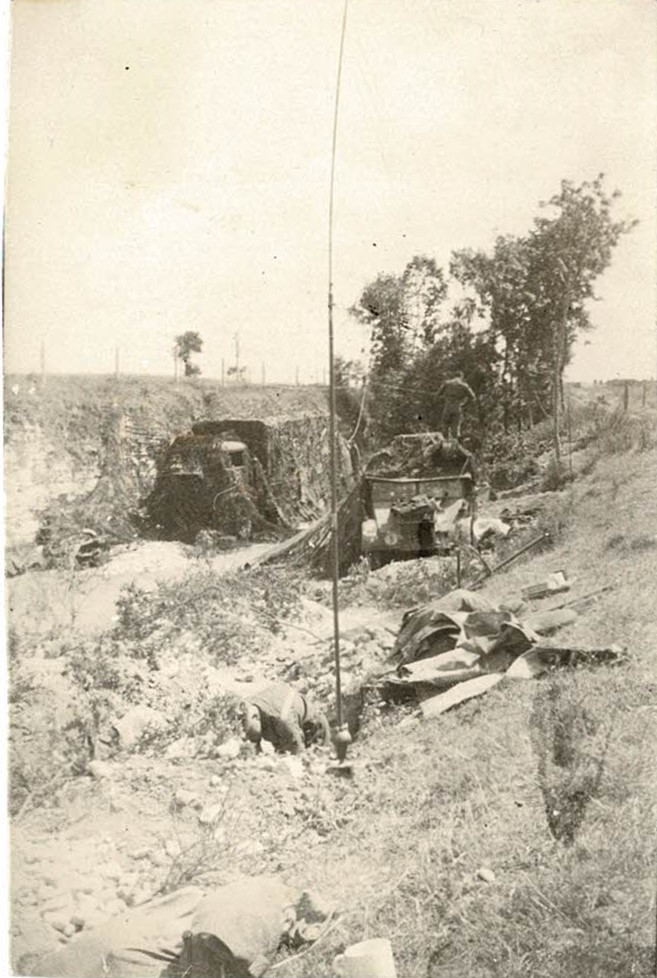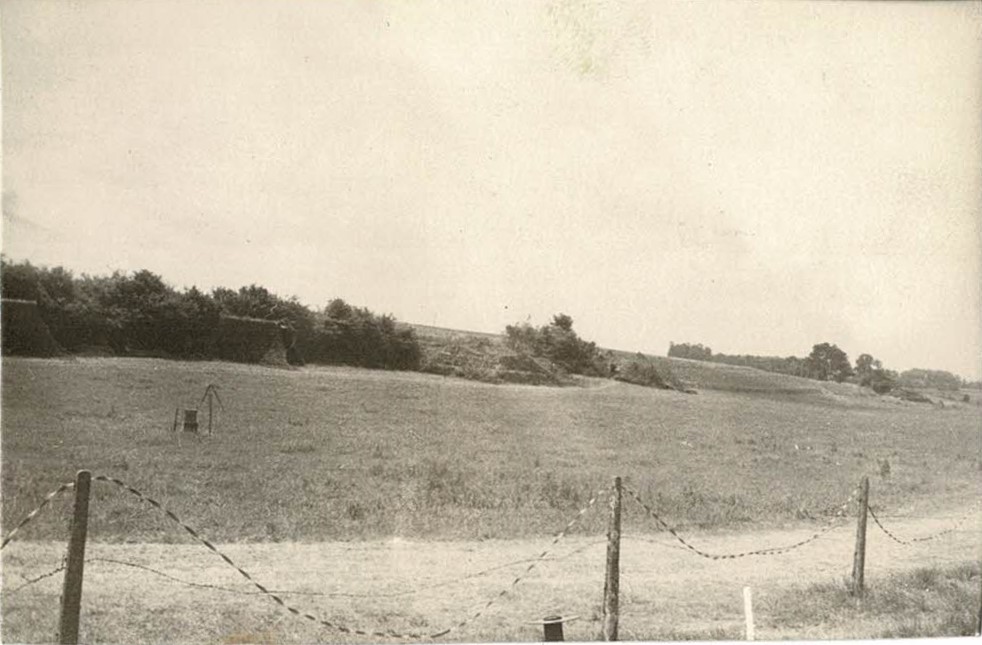D-Day Landings – 80th Anniversary
2024 marks eighty years since the Normandy D-Day landings, also known as Operation Neptune, which started on the 6th of June 1944 and were the largest seaborne invasions to have taken place in the history of warfare. These landings were said to have brought about the beginning of the end of war in Europe which was part of the plan named Operation Overlord. The beaches at Normandy were given code names Utah, Omaha, Gold, Juno and Sword. The attack took place over air, land and sea.

Map showing South coast of England and North coast of France and locations of landing beaches. © The National Archives
Diversion tactics had been used by the allied forces to distract the German military from the actual invasion plans. Rumours of an invasion taking place at Pas-de-Calais, which is the closest point between the UK and France, had been started to draw troops away from the site of the future invasion, this left the allied troops at an overall advantage as the coastline was underdefended. The Nazi’s had built an extensive series of fortifications known as the Atlantic Wall along the coast of continental Europe and Scandinavia in order to defend against the Allied troop’s attempts to invade by sea but, the extensive series of diversions had meant that the German troops were currently being sent to the Eastern Front to defend against the Russian Military.
Rumours of a larger second invasion had kept the remaining German forces spread out and away from the front at Normandy as they were waiting for a secondary attack to occur in quick succession at the Pas-de-Calais or in Norway. This was a major factor in the success of the Normandy invasion.
D-Day +1

IWM (A 13142) – Photograph of HMS Cheshire, the troop transport vessel that brought the 79th regiment Scottish Horse to Juno Beach, 1944.
The Scottish Horse participated in the D-Day landings in Normandy, they arrived at Juno Beach on D-Day +1 (the 7th of June). This had been the Canadian’s landing beach on D-day itself and had been secured with many losses by the end of the day 6th of June and the arrival of another wave of troops.
The 79th Medium Artillery regiment who were raised on the 15th of February 1940, were trained with the knowledge that they were destined to take part in the Invasion of Europe. They participated in a great deal of training in artillery skills as well as amphibious landing and other techniques that would be essential for their future. Overtime and with intense training their skills grew considerably, by the 3rd of June 1944 they were ready to participate in one of the largest operations in military history. The troops travelled to Tilbury in order to leave port for France, D-Day was initially scheduled to commence on the 5th of June by General Dwight Eisenhower but was postponed due to poor weather conditions.
Some of the 79th Regiment Scottish Horse pre 1944.
The launch of the attack was deadly, many men lost their lives on the beaches of Normandy. However, no Scottish Horse troops were killed during the assault on the beaches as they arrived the day after the initial landings onto a secure beach, they all made it to their primary location unharmed. Without the brave effort of the soldiers who arrived before them, this could have been a very different story, Juno Beach was said to have been particularly dangerous on D-Day.
It is surprising however that the Scottish Horse troops did arrive unscathed as there was a mishap in regards to the troops location. Upon arriving to the beach the troops, of the 79th Medium Regiment continued onwards, Captain Prentice who was leading these troops told the story in the Scottish Horse book post war.
“Having marched about ten miles we were within approximately one mile of the supposed gun position. Here I called a halt, ordered the men to prepare a meal, and took stock of the situation. Everyone was carrying an eighty pound kit and most of the men were rather tired but their spirts were very high. While the men were preparing their meal I went off on the bicycle to try and make contact with the regiment. To reach the gun area I passed through the villages of Thaon and Cairon which were strangely devoid of troops. I made a search of the gun area, which was close to Vieux Cairon, but saw nothing of the regiment and then I made enquiries from the local inhabitants and again drew a blank. Afterwards I discovered that the regiment did not disembark until D plus 2, although it was scheduled to land at H plus 16 ½ hours* (on D-day), and that at the moment I was wandering about well in front of our own troops in an area that has not been reported clear of the enemy; in fact the area was supposed to be still occupied by the enemy.
When I left the main body with Lieutenant D.C. Reid in charge, I gave him orders to report to me at Cairon. The troops having finished their meal he set out to do this, but was overtaken by the commanding officer of a reconnaissance regiment in a scout car, who ordered the party back as the area they were going into was still held by the enemy. The party was taken back to a safe area where they spent the night. “
– Captain Prentice, reflecting on events post D-Day .
*H refers to the hour of Landing on D-Day, in this case they were scheduled to land at 4:30pm on the 6th of June but did not disembark from the ship until the 8th of June.
Captain Prentice was leading the marching troops of the 79th regiment who were the first of the Scottish Horse troops to reach France as part of this invasion of Europe. After the 79th regiments accidental trip into enemy occupied land in Cairon and Thaon they retreated to Banville on the 8th of June where they joined the “C” troop who were engaged in active combat. Shortly after midday on the 8th of June the remaining Scottish Horse troops “A”, “B” and “D” came ashore and began their deployment.

Camouflage Gun Position
Photographs taken by Scottish Horse Soldiers, Normandy June 1944.

Signal Section Cam after being hit by a shell

View from Gun Position
The Scottish Horse regiment then began to face losses during this assault on Normandy. On the 9th of June 1944, north of Caen, Scottish Horse Artillery were deployed to support a Battalion of the 3rd British Division. The 109 Battery artillery troops were led by Major Robin Alexander Lyle under the noses of enemy tanks to complete a surprise attack, Major Lyle succeeded in ranging the artillery attack on the tanks successfully but, was sadly killed almost immediately into the fight by a shell from an enemy tank. As soon as the news of Major Lyle’s death reached Captain D. J. Ramsay of the 109 Battery, he withdrew the troops from the fight, only one of whom had sustained any injury.
Major Lyle was buried on the gun position shortly after his death. On the 11th of April 1945 he was reburied in the Ryes Military cemetery in Bazenville, France, alongside many other soldiers who had lost their lives. Major Lyle’s family had been deeply involved in the Scottish Horse, his father Colonel Sir Archibald Lyle fought with the regiment in the first world war and then later commanded it. Major Lyle had served with the regiment for 14 years prior to his death and was a well-liked and respected individual. His loss was sadly mourned by the regiment.

Just over a week later on the 17th of June 1944 Captain David James Ramsay, who had taken command of the 109 battery after the death of Major Lyle, went missing after entering disputed territory at La Villeneuve and was not seen again. The regiment could not confirm his death until a much later date, but this was yet again a painful blow to the regiment and a sad loss of life. Captain Ramsay was buried at Bayeux British Cemetery on the 27th of March 1945.
Captain D. M. Brown of the 79th Scottish horse wrote at length about the experiences of the regiment during the second world war in a book entitled “The Scottish Horse 1939-1945”, this was written in collaboration with several other Scottish Horse officers. The fighting in Normandy is recorded first hand in this book and allows for a personal insight into the experiences of these men. The book also gives a timeline account of the action which the regiment saw. A modern edition of the Scottish Horse history from 1900-1956 is available to purchase from the archive.
Roll of Honour for Scottish Horse D-day Landings
Major Robin Alexander Lyle
Died 09 June 1944
Captain David James Ramsay
Died 17 June 1944
Gunner Robert Bell
Died 28 June 1944
You can help support us in the archive using our support us section. If you have information or artefacts or photographs relating to the Scottish Horse that you would like to donate to us, please get in touch!



